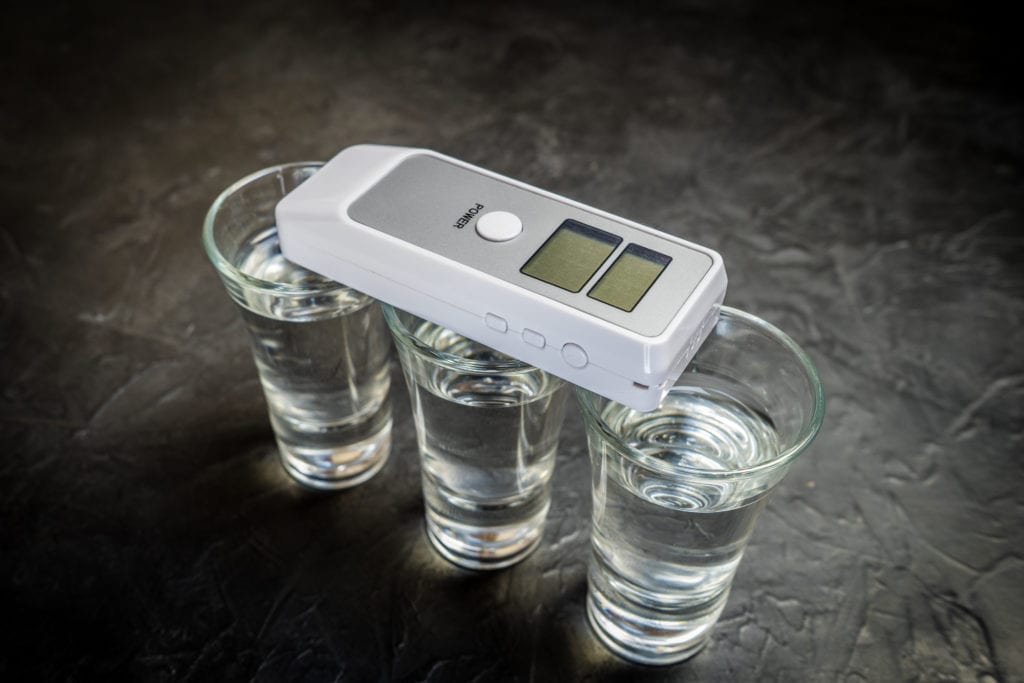Red flashing lights, blowing into breathalyzers, and drunk driving usually all have one thing in common, blood alcohol concentration.
If you are driving with a blood alcohol content of 0.08% or higher, you are considered legally impaired and will be arrested if you are pulled over by a police officer. If you get into a motor vehicle accident and injure or kill someone while you are under the influence, you can be charged with manslaughter. Driving under the influence is not only dangerous for you but also dangerous to all other drivers on the road.
Many individuals may be familiar with the number 0.08, which is the legal driving blood alcohol concentration for individuals 21 years of age or older. More specifically, blood alcohol concentration (BAC) refers to the amount of alcohol that is present in the bloodstream; in other words, how much alcohol an individual consumed in one time period and how this alcohol has affected him/her. The BAC is given in a percentage and is measured in the ratio of alcohol to blood.
How much is too much?
Commercially available breathalyzers are the most accurate way to determine if you are over the legal limit to operate a motor vehicle. There are many other ways to help calculate your BAC however, these alternative ways are not as accurate since they do not factor in metabolism, tolerance, and the strength of drinks.
Common factors that affect your BAC include:
- age
- gender
- metabolism
- medications
- tolerance
- amount of food consumed
- rate of alcohol consumption
- strength of drinks
Intoxication begins with the very first drink, and although the old wives’ tale of one standard drink per hour does not always hold and can land you in trouble with the law, most individuals still believe in this motto. One standard drink is defined by the National Institute on Alcohol Abuse and Alcoholism (NIAAA) as half an ounce of alcohol (one 12 oz. beer, one 5 oz. glass of wine, or one 1.5 oz. shot of distilled spirits). There’s no magic formula to calculate how many drinks it takes to reach a blood alcohol concentration of 0.08. As a rule of thumb, if you feel impaired in any way, including slurred speech, a decrease in inhibition, poor balance, an increase in relaxation, or changes in your memory or reasoning, you should not place yourself behind the wheel of a vehicle.
Seeking treatment for alcohol use disorder
Many individuals who are arrested for multiple DUIs most likely have some alcohol use disorder. It is possible not to have an alcohol use disorder, get behind the wheel after two glasses of wine, and blow over the legal limit, resulting in a DUI. When this happens on more than one occasion, there may be an underlying disorder present.
Alcohol use disorder is associated with many risk factors, including genetics, mental health disorders, poor coping skills, a history of trauma, severe life stressors, and many individuals with these triggers may often use alcohol as a way to numb their emotions. Seeking treatment through psychotherapy, joining a community support group, and enrolling in a residential treatment center for alcohol are all adequate ways to seek help for an alcohol use disorder.
Depending on the severity of your disorder, quitting alcohol cold turkey is not recommended, as it can result in life-threatening withdrawals. If you suspect that you need help quitting alcohol, it is essential to reach out to a healthcare professional in your community.
Kristen Fuller, M.D., is a clinical content writer and enjoys writing about evidence-based topics in the cutting-edge world of mental health and addiction medicine. She is a family medicine physician and author, who also teaches and contributes to medicine board education. Her passion lies within educating the public on preventable diseases including mental health disorders and the stigma associated with them. She is also an outdoor activist and spends most of her free time empowering other women to get outside into the backcountry.
